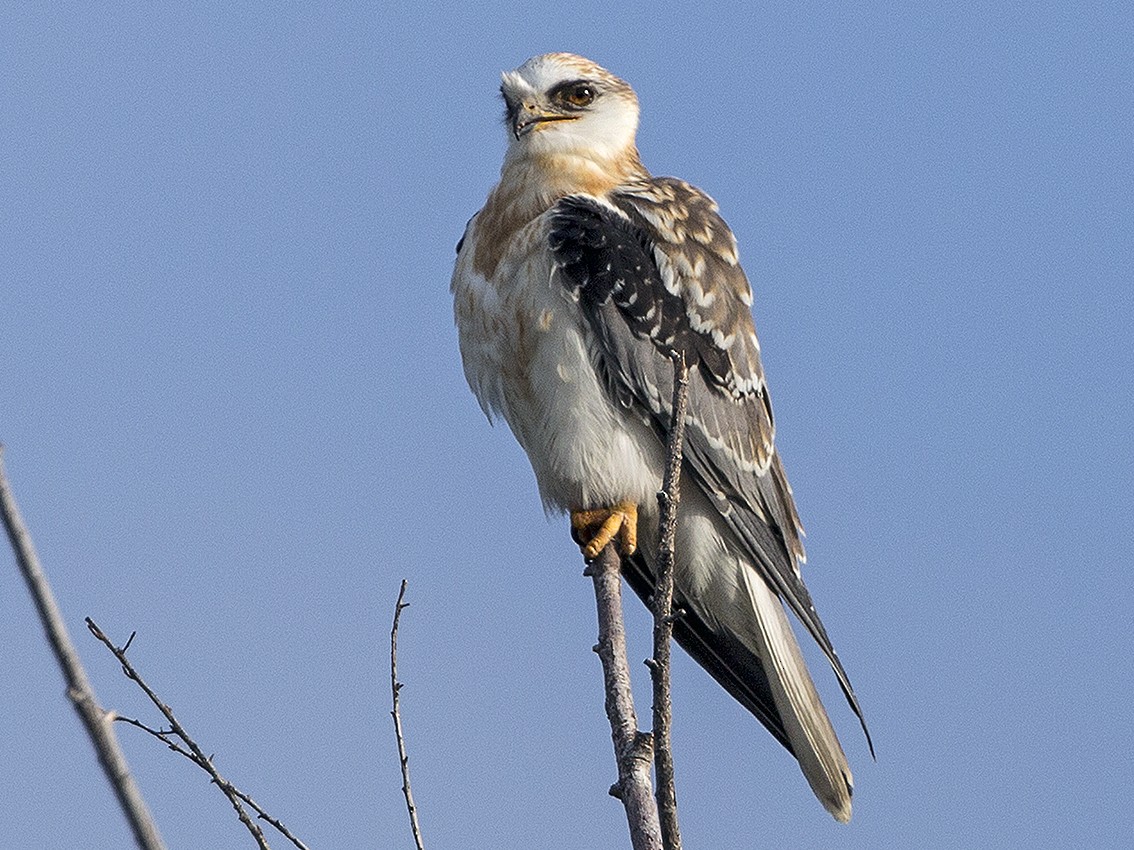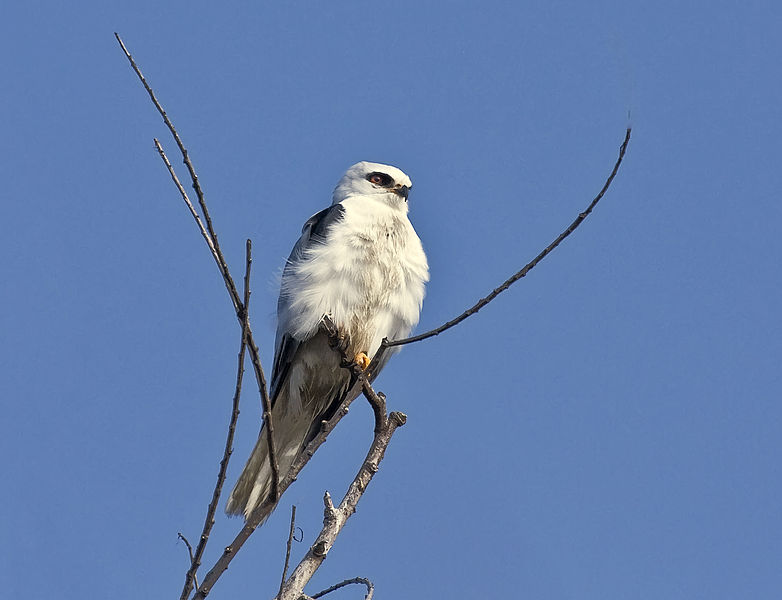White-tailed Kite Bird Details
Elanus leucurus
White-tailed Kite
Safed Poonch Giddh
Louis Pierre Vieillot, 1818
Accipitriformes (HAWKS, EAGLES and KITES)
Accipitridae
Elanus
- United States: California, Texas, Florida, and other parts of the southern and western United States.
- Mexico
- Central America: Guatemala, Honduras, Nicaragua, Costa Rica, and Panama.
- South America: Colombia, Venezuela, Ecuador, Peru, Bolivia, Brazil, Paraguay, Uruguay, Argentina, and Chile.
Appearance :
White-tailed Kites are medium-sized raptors with long, narrow wings and a long, squared-off tail. They have predominantly gray plumage with black shoulder patches. Their eyes are red, and they have a distinctive black band across their shoulders.
Behaviour :
They are known for their hovering flight technique while hunting, where they can remain suspended in the air with rapid wing beats. They are solitary hunters and often seen perched prominently on trees or utility poles.
Habitat :
White-tailed Kites prefer open habitats such as grasslands, marshes, agricultural fields, and savannas. They are commonly found near water bodies.
Diet :
They primarily feed on small mammals like rodents, birds, and occasionally insects. They hunt by hovering over open areas and dropping down on their prey.
Conservation Status :
Least Concern
Distribution :
They are native to the Americas, ranging from the United States (California, Texas) through Central America to South America (down to Argentina and Chile).
Population Size :
Difficult to pinpoint precisely.
Life Span :
10-12 years.
Body And Tarsus:
The White-tailed Kite has a slim, long-winged silhouette with predominantly white plumage and black shoulder patches.
Head And Bill :
The head is white with piercing red eyes and a hooked, black-tipped bill.
Length :
Approximately 14 to 15 inches (36 to 38 cm).
Neck :
The neck is relatively short and not prominently distinct from the body.
Size :
Medium-sized raptor with a slender build.
Tail Details :
The tail is long and gracefully forked, with white plumage.
Weight :
Around 10 to 12 ounces (280 to 340 grams).
Wing :
Long, pointed wings adapted for agile flight.
Wing Span :
Ranges from 38 to 43 inches (96 to 110 cm).
Facial Feature :
Red eyes and a distinctive black mask around the eyes.
Nest Details :
- The nest is usually located in the canopy of trees, often near water.
- Nest made up of: Constructed from sticks and lined with softer materials such as grasses and feathers.
Breeding Season :
From late winter to summer.
Nesting Season :
During the breeding season.
Egg Color :
Generally white with occasional faint markings.
Egg Length :
About 1.5 inches (3.8 cm).
Egg Width and Weight :
Approximately 1.2 inches (3 cm).
Clutch Size :
Usually 3 to 4 eggs per clutch.
No. of Broods :
One brood per breeding season.
Incubation Period :
Lasts about 30 days.
Nestling Period :
About 30 to 35 days before fledging.
Vocalization :
They are generally silent but may emit high-pitched calls or whistles during courtship or when defending territory.
Sex Demorphism :
Females may be slightly larger than males.
Migration Details :
Non-migratory Birds





